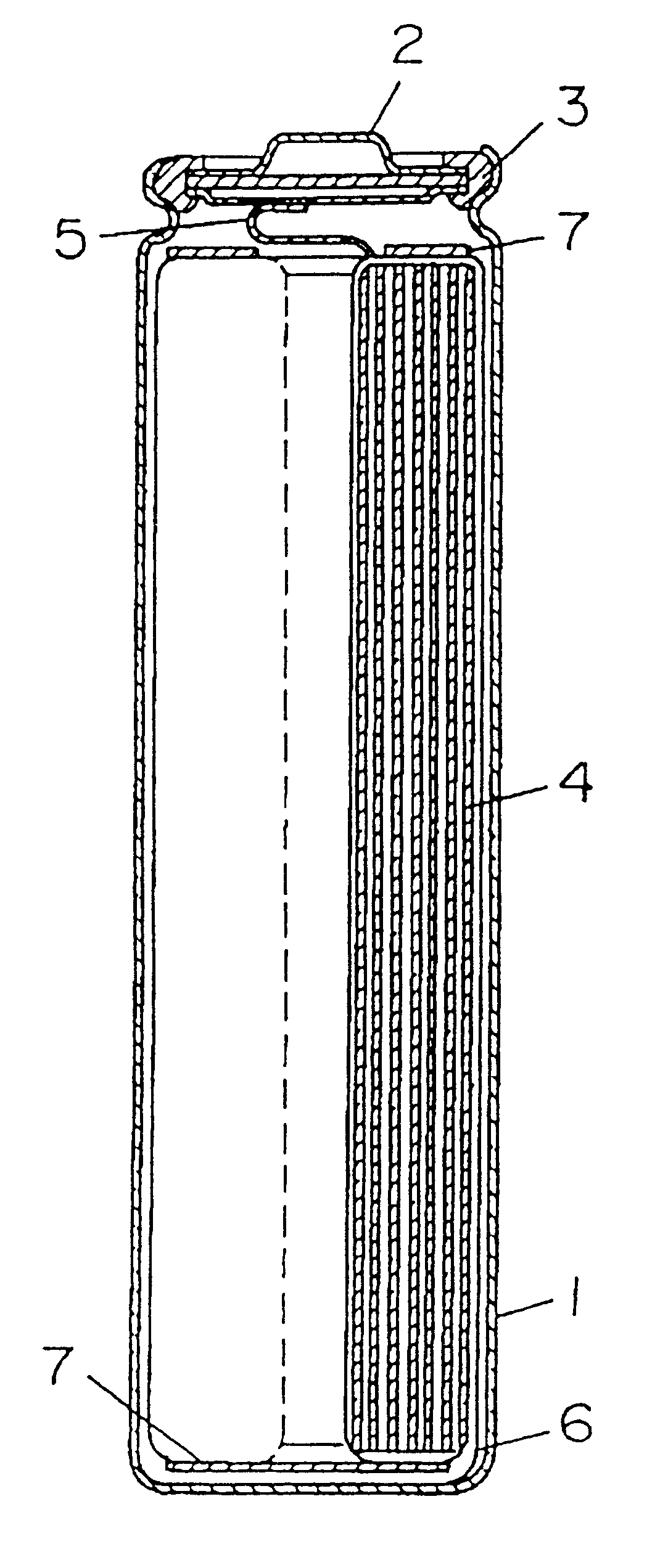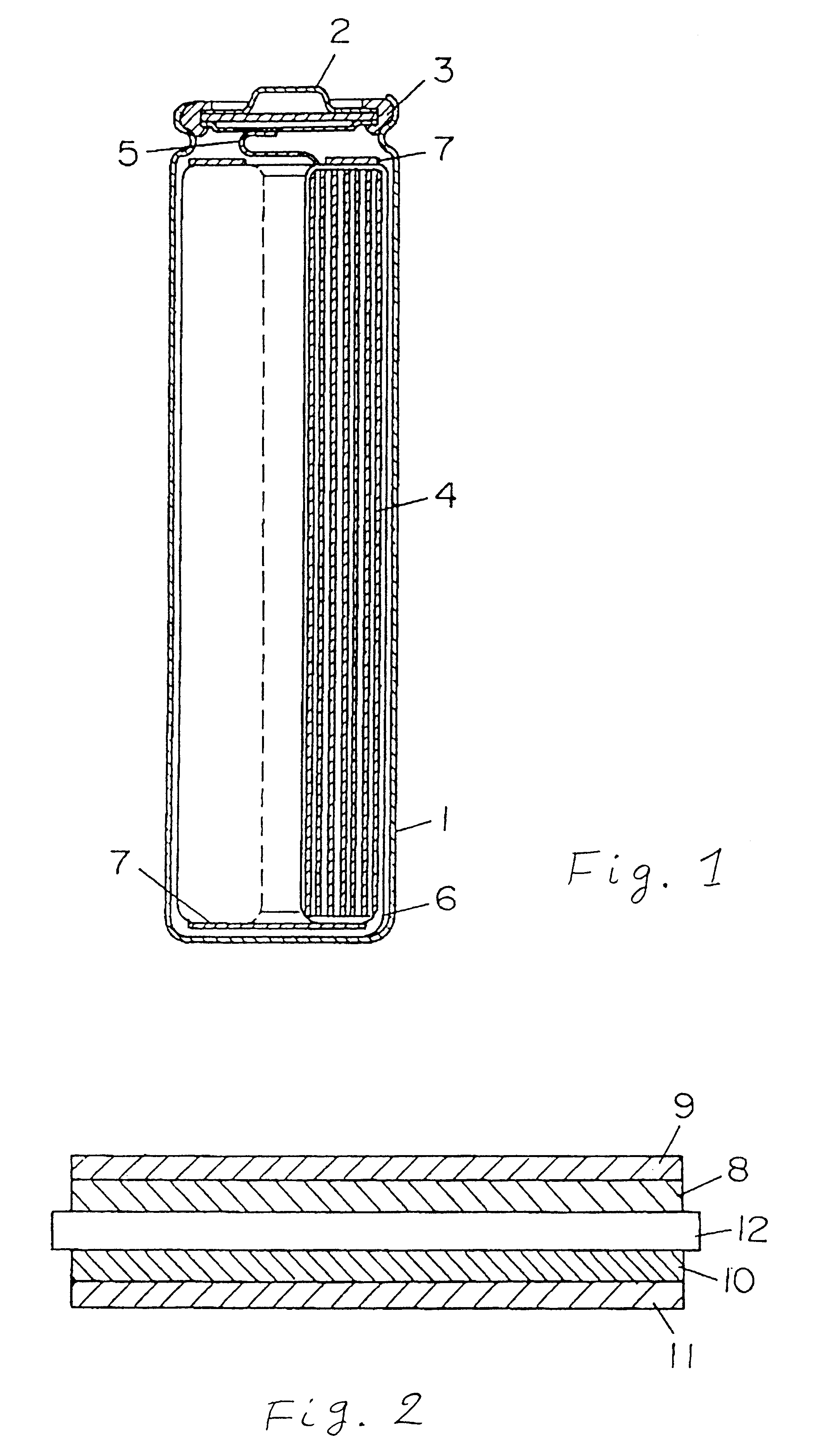Nonaqueous electrolyte secondary battery and its anode
a secondary battery and electrolyte technology, applied in the field of nonaqueous electrolyte secondary battery and its anode, can solve the problems of incomplete solution, inability to obtain favorable high rate charging and discharging characteristic or charging short circuit of battery internal circuit, etc., to enhance the charge and discharging cycle characteristic, excellent effect of high rate discharging characteristi
- Summary
- Abstract
- Description
- Claims
- Application Information
AI Technical Summary
Benefits of technology
Problems solved by technology
Method used
Image
Examples
example 1
FIG. 1 is a longitudinal sectional view of a cylindrical battery used in this example. In the diagram, reference numeral 1 is a battery case prepared by processing a stainless steel plate having resistance to organic electrolyte, 2 is a seal plate having a safety valve, and 3 is an insulating packing. Reference numeral 4 is an electrode group having a cathode and an anode spirally wound through a separator, and it is accommodated in the case 1. From the cathode, a cathode lead 5 is drawn out and connected to the seal plate 2, and from the anode, an anode lead 6 is drawn out and connected to the bottom of the battery case 1. Reference numeral 7 is an insulating ring, which is provided in the upper and lower parts of the electrode group 4. The cathode and anode are specifically described below.
The cathode is composed of 100 parts by weight of LiCoO.sub.2 powder synthesized by mixing Li.sub.2 Co.sub.3 and Co.sub.3 O.sub.4 and calcining for 10 hours at 900.degree. C., 3 parts by weight ...
example 2
The negative electrode and battery were fabricated in the same manner as in example 1 except that massive graphite obtained by grinding and sieving natural graphite was used as the graphite material, and cell B of the invention was completed. Part of the electrode was cut out and used as the sample for measurement of wide angle X-ray diffraction, and the intensity ratio R of (110) and (004) was determined.
example 3
The negative electrode and battery were fabricated in the same manner as in example 1 except that spheroidal graphite made of meso-phase pitch obtained by graphitizing at 2800.degree. C. was used as the graphite material after grinding and sieving, and cell C of the invention was completed. Part of the electrode was cut out and used as the sample for measurement of wide angle X-ray diffraction, and the intensity ratio R of (110) and (004) was determined.
PUM
| Property | Measurement | Unit |
|---|---|---|
| median diameter D50 | aaaaa | aaaaa |
| specific surface area | aaaaa | aaaaa |
| lattice distance | aaaaa | aaaaa |
Abstract
Description
Claims
Application Information
 Login to View More
Login to View More - R&D
- Intellectual Property
- Life Sciences
- Materials
- Tech Scout
- Unparalleled Data Quality
- Higher Quality Content
- 60% Fewer Hallucinations
Browse by: Latest US Patents, China's latest patents, Technical Efficacy Thesaurus, Application Domain, Technology Topic, Popular Technical Reports.
© 2025 PatSnap. All rights reserved.Legal|Privacy policy|Modern Slavery Act Transparency Statement|Sitemap|About US| Contact US: help@patsnap.com



